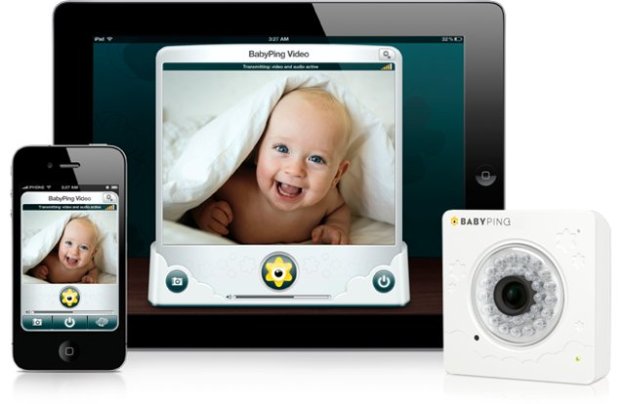
UPDATE: The BabyPing has received an official United States market release.
If you have a new baby, then you know that keeping an eye (or ear) on them at all times is a necessity, even if your little one is sleeping in the next room. While static-ridden audio baby-monitors have been around for quite some time to give sleepy parents some sense of security and notify them when their babies are awake or upset, there haven’t exactly been technological leaps and bounds made in the arena of baby-monitoring until now. The new, yet-to-be-released BabyPing system aims to bring baby-monitoring into the 21st century with audio and video monitoring in collaboration with your iOS device.
The BabyPing system ($TBA) works with a combination of an iOS device, a baby monitor, a free BabyPing app, and a WiFi network. Put all of those things together and you get a much more advanced baby-monitoring system, complete with 640 x 480 resolution video and a built-in microphone to give you all the benefits of audio-monitoring. The system improves on the audio aspect as well, with a Smart Filter to cut out background noise and static, and Constant-Connect, which works as a permanent tether between the free app on your device and the actual monitor, notifying you instantly if your WiFi connection gets disrupted or if your baby is upset.
The BabyPing system will be available starting in February 2012. No word on price yet, but you can sign up with your email to receive more information when it’s available over at the official website.
Editors' Recommendations
- The Chillax Baby Mood AI Smart Monitor focuses on privacy
- Security camera maker Kami dives into 24/7 home security monitoring
- Google’s future baby monitor could spy on your kid to alert you before they cry
- New to being a mom? Prices cut on baby monitors, sound machines for Mother’s Day


